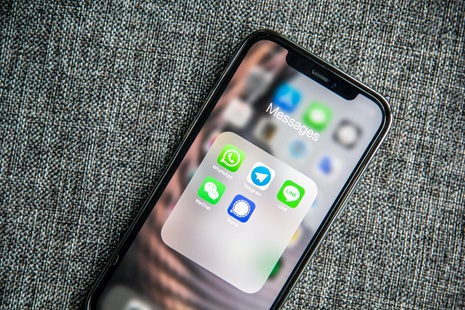Brands that implement an omnichannel communication strategy are three times more likely to report significant revenue growth than those that don’t, according to a survey by global omnichannel communications solutions concern Mitto. The revenue growth stems from increased engagement.
Why is omnichannel messaging critical to augmenting engagement? A client may seek information on a product or service at any time. They’ll use whatever device is handy to find the information they want. Later, they may use a different device or channel. Brands with an omnichannel communication strategy can reach out to customers more quickly and effectively across various platforms, such as Facebook, SMS, and Instagram.
Here are some ways brands use omnichannel messaging to drive engagement.
Communicating via Priority Channels
Consumers differ in their preferred communication channels based on convenience, age, and lifestyle — and favored channels can change over time. In the recent past, many customers preferred to communicate via email about their e-commerce transactions. However, two-thirds of Generation Z members now prefer SMS messaging. Brands need an omnichannel e-commerce platform to help them quickly pivot from one channel to another as preferences change.
Brands also need a platform that uses artificial intelligence to automate and determine the best channel for any given message. Platforms like Mitto’s omnichannel software include this automation and the flexibility to prepare for the priority channels of the future.
Personalizing Messages
Messages that appeal to the customer’s interests are more effective than generic ones in building lasting relationships. A well-honed omnichannel communication strategy segments customers and personalized messages.
Using Data To Drive Decisions
Sometimes, brands send messages to potential and current clients that the customer may never see. They may send emails to customers who prefer SMS, or they may send irrelevant messages that the customer fails to read.
A unified omnichannel strategy will include technology that provides details of campaigns, such as the open rate, delivery costs, and other results. Companies can use this information to better target buyers in the future.
Proactively Engaging With Customers
Successful brands proactively engage with customers across multiple channels. When clients see the brand engaging on their favorite channel, they’re likely to engage.
Brands can also use images and videos in their omnichannel messaging. This can make engagements more lively and entertaining and give the brand personality. They can also encourage current customers to share these messages with their networks. Increased chatter about a brand is likely to increase sales.
Speeding Up Response Time
Having a team to respond to inquiries 24/7 is cost-prohibitive for many businesses. Yet, customers insist on a speedy response to their questions. Automated omnichannel communication, such as chatbots, help small businesses respond to customers quickly at all hours. Omnichannel software like Mitto’s provides small businesses with the tools to create these chatbots at an affordable price.
Providing a Unified Experience
Customers expect consistency from messaging. They also expect unified messaging across their omnichannel e-commerce experience. Up to 86% of customers regularly channel-hop. Still, however, silos exist between channels. Participants can only see some communications with the customer, so customers receive disjointed communications.
A survey found that 83% of participants who achieve complete unification of channels see all the contacts with the client across platforms. Omnichannel software like Mitto’s allows the brand’s employees to see all of these communications across channels and improve the effectiveness of their omnichannel e-commerce.
Key Takeaways
- An effective omnichannel strategy can improve sales and profitability.
- The strategy must send personalized messages to the customer’s priority channel, proactively engage with customers, answer questions promptly, and provide a unified customer experience across channels to be successful.
- Omnichannel software is a critical component of a successful omnichannel strategy.
Related posts
HOT TOPICS
Recent Posts
- What Is The Use of Palletizing Cobots? November 14, 2023
- Python Programming & Its Importance In Machine Learning September 27, 2023
- How email encryption works September 14, 2023
- How to create a custom WordPress website maintenance plan May 23, 2023
- Social Media Marketing – How It Can Benefit Your Business May 13, 2023
- Benefits Of Modern Software For Fleet Tracking May 3, 2023
Archives
- November 2023
- September 2023
- May 2023
- April 2023
- March 2023
- February 2023
- December 2022
- November 2022
- October 2022
- September 2022
- August 2022
- July 2022
- June 2022
- May 2022
- April 2022
- February 2022
- December 2021
- November 2021
- October 2021
- September 2021
- August 2021
- July 2021
- June 2021
- May 2021
- April 2021
- October 2020
- September 2020
- August 2020
- July 2020
- June 2020
- May 2020
- April 2020
- February 2020
- January 2020
- May 2019


